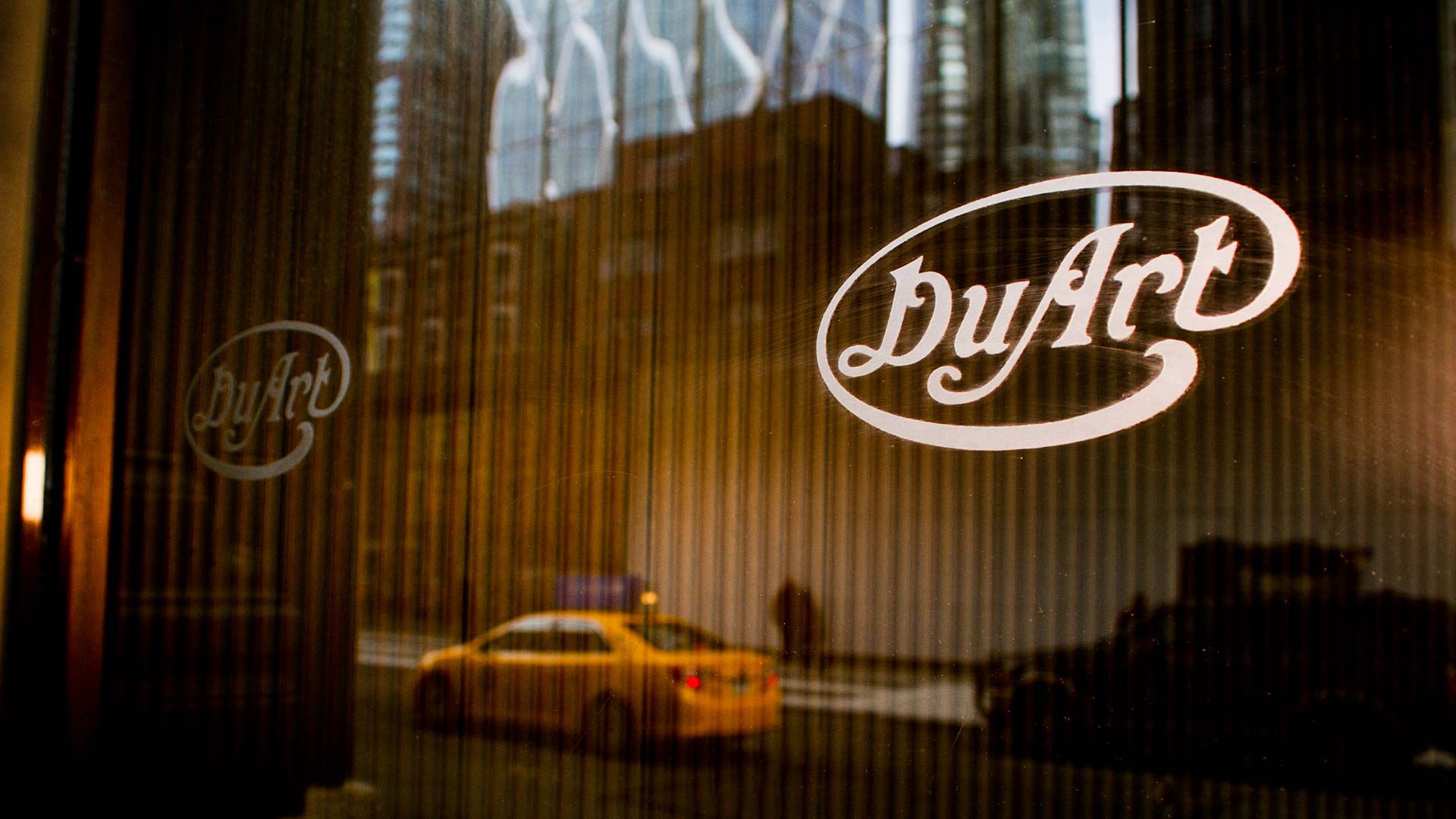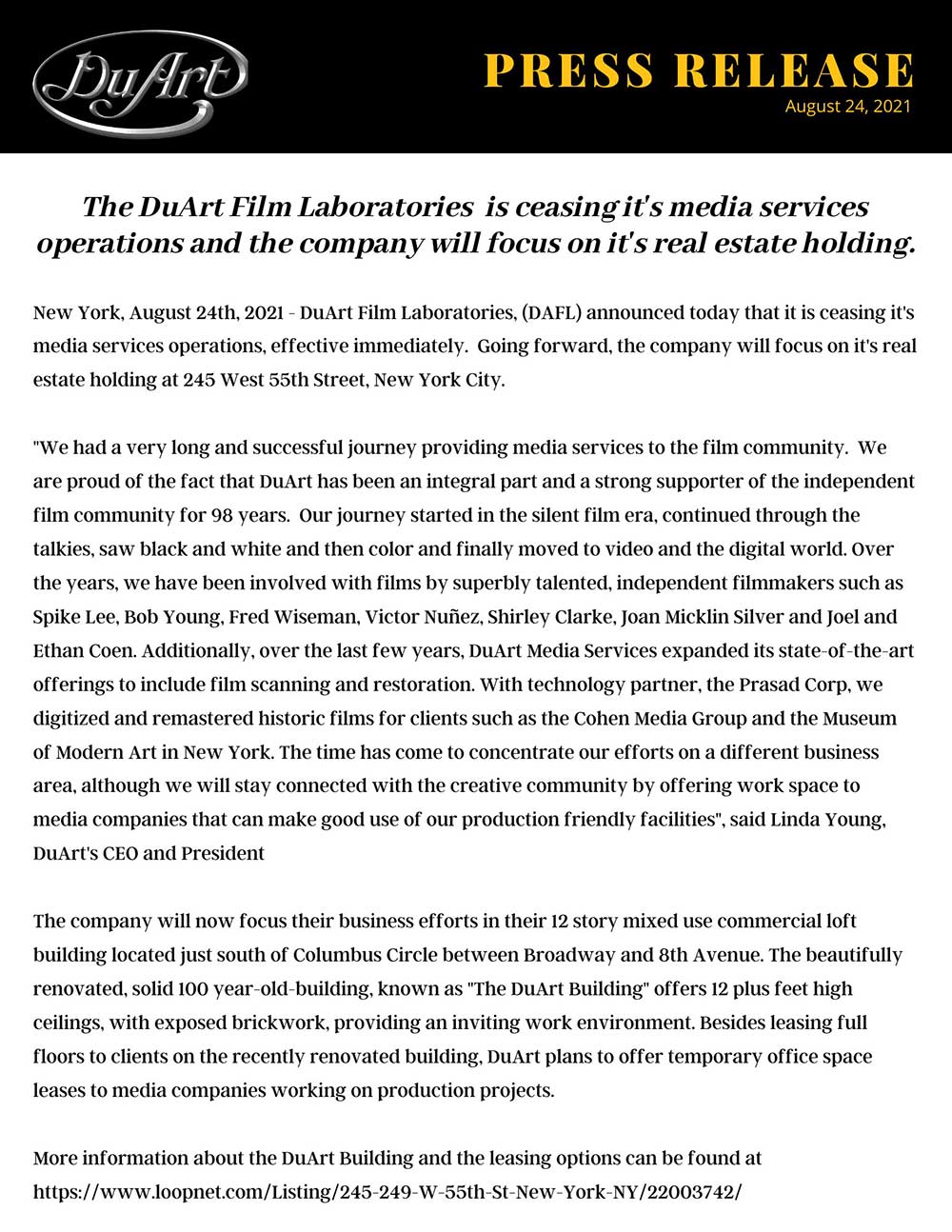
It was one of the oldest motion film labs in the world, and while it stopped processing film a few years ago, the firm has now closed the doors on its Media Services business to focus on its real estate holding.
Ever since the mid-90s, when the generic video-packed “multimedia CD” became something you could sell, there’s been a low-resolution clip of a film leader doing the rounds. It looks old, although it’s hard to tell through the up-to-the-century Cinepak compression. The image includes fragments of handwriting, clearly written down the length of the film by a processing technician, and only parts of it are visible. What it actually says is “DuAr Lab 45 W 55 New Y 019.”
What it actually says, as will be clear to anyone with a passing knowledge of film production in the north-eastern USA, is something like “DuArt Laboratory, 245 W 55th St, New York, NY 10019.”
DuArt was such a prolific fixture of film and TV work that it’s no surprise to encounter it in the form of this early piece of multimedia ephemera; CD-ROMs might be comically dated, but in the context of DuArt they happened last week. 245 West 55th, just south of Central Park, has been known as the DuArt building for decades. If we wanted to find a company that practically embodied the sort of historic gloss that modern filmmakers reach for when they describe something as being “organic,” it’d be hard to do better than DuArt.
And now, after so nearly a century that it hurts, DuArt is shutting down its media services operations, though it still owns the building. Much of the detail in the following history comes from a 1997 essay by David Leitner, technical director at DuArt in the 1980s, whose knowledge of the company was clearly bolstered by a huge amount of discussion with some of its most experienced staff.

The press release announcing the closure.
A brief history of DuArt
The company hadn’t actually processed film since 2010, a move characteristic of an organisation which had existed long enough to see every major change in film production and survived them all. Founded in 1922 by Al Young and still run by his descendants, DuArt experienced every significant change that ever happened in film and TV. So primal was the company’s involvement in that it was involved in the move to continuous processing, using machines through which motion picture film would be pulled over rollers as opposed to dipped on racks.
DuArt saw out the Great Depression at the dawn of sound, a time when cinema attendance actually boomed in the US. A big-screen musical was a welcome distraction to audiences desperate to escape the gloom of everyday existence, though duplicating optical soundtracks was an exotic technology, one for which the company would design its own equipment. At the same time, the 16mm news film and documentary business, with which DuArt would remain closely associated until the end, grew.
The Second World War provoked, as such things often do, a busy period. The military wanted 16mm blow-downs of feature films to keep the troops entertained, and the company released staff on leaves of absence for war duty. During the inevitable post-war decline, around 1950, the burgeoning popularity of television and the advent of complex new colour film processes required new equipment and new people. The ECN – Eastman Colour Negative – process was first run by DuArt in that same year; the successor ECN-2 process endures to this day.
By the mid-fifties, the original team was nearing retirement, but the company nevertheless managed to leverage the new TV market in commercial production, fast-turnaround news and the handling of kinescope film (produced by cameras shooting monitors to record live TV before video tape existed). By the 1960s, low-contrast, pan-and-scan prints of cinema releases were required for good results from early telecines.
The first video equipment went in at the end of the 60s. Ever eager to grasp the nettle of new technology, DuArt developed innovative software to control colour changes during printing, and more video equipment appeared. As early as the 1980s the company was providing overnight transfers of film material on video, then a new idea. Through the 90s, the transfer department expanded and began to do new things.
The post-2000 story is recent enough to be familiar. Film went away; DuArt reacted capably yet again, although for a company which had by then spent eighty-eight years handling film, it was probably a massive pivot. The company continued offering edit suites for hire, audio production and, particularly, restoration services alongside its post-production facilities under the DuArt Media Services banner.
The press release says nothing about what happened, although that’s a valuable building in one of the most expensive city centres on the planet. Much of London’s post production infrastructure was at one time in the super-expensive Soho district and eventually much of that fell to the realisation that restaurants make money faster than edit suites. In the end, it’s either a shame that DuArt didn’t quite make the century, or a triumph that it almost did.
Tags: Post & VFX News



Comments